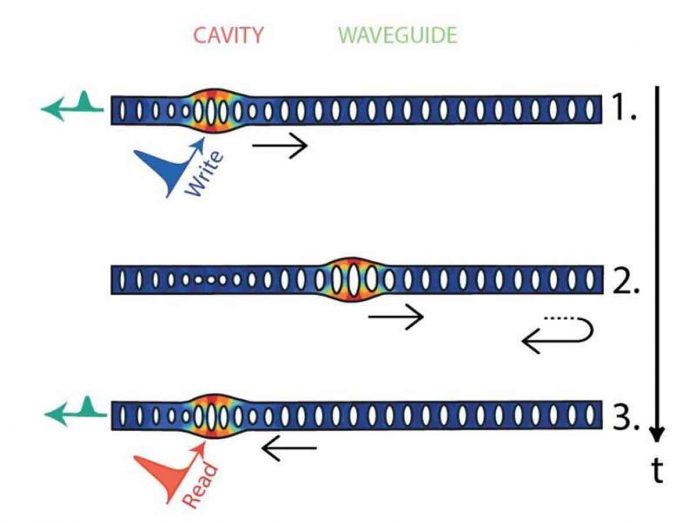The ability to generate, manipulate, and detect non-classical states of light is central to most quantum computing technologies. Non-classical states are quantum states that cannot be produced directly using conventional light sources such as lamps and lasers and thus cannot be described by classical electromagnetism theory.
Squeezed states, entangled states, and states with a negative Wigner function are examples of unconventional states. The ability to control the states of phononic systems, which involve acoustics and vibration, could open up new avenues for the development of new quantum technologies, such as quantum sensing and quantum information processing devices.
Researchers at the Kavli Institute of Nanoscience at Delft University of Technology (TU Delft) recently introduced a strategy that could be used to achieve a high level of control over phononic waveguides. This strategy, described in a paper published in Nature Physics, could enable the use of phononic waveguides in quantum technology in the same way that optical fibres and waveguides are used today.
Quantum information encoded in optical photons can be transmitted using optical fibres and waveguides. They have been critical components of both quantum and classical communication technology for decades.
“Realizing equivalent components to optical fibres and waveguides for mechanical excitations has the potential to revolutionise the nascent field of quantum acoustics and phononics,” said one of the study’s authors, Simon Gröblacher. “Such low-loss phononic waveguides will not only allow for the guidance and transmission of (quantum) information encoded in phonons across tens of centimetres on a chip, but will also serve as the foundation for full coherent control over travelling mechanical excitations.”
The main goal of Gröblacher and his colleagues’ recent work was to devise a method for controlling non-classical mechanical states in a phononic waveguide with individual phonons in a suspended silicon microstructure. They eventually hope to introduce a new toolbox for conducting experiments in the field of quantum acoustics, which will allow physicists and engineers to interact with quantum systems in novel ways.
“Acoustic waves are fundamentally different from the oscillation of single atoms or ions in traps because of their associated large mass, their propagating character, and the ability to couple to a wide range of other quantum systems such as quantum dots and superconducting qubits,” Gröblacher explained. “Guiding single phonons is an important step toward realising hybrid quantum devices and transferring quantum information across heterogeneous networks.”
Gröblacher’s research group has conducted numerous experiments focusing on phononic devices over the last few years. Using radiation-pressure optomechanical interactions, they were able to create, store, and detect single phonons in photonic/phononic crystal devices in previous studies.
As part of their recent research, they created the first phononic waveguide capable of producing non-classical travelling mechanical excitations.
“We were able to verify the propagation of these quantum states in the waveguide by fabricating the waveguide from thin film silicon and combining it with a source and detector for non-classical mechanical states,” Gröblacher explained. “These GHz acoustic waves are guided in a highly confined nanoscale geometry, with long lifetimes (up to several milliseconds), especially at low temperatures, enabling the faithful transport of quantum states over centimetre distances on a chip.”
Gröblacher and his colleagues demonstrated in their experiments that non-classical correlations emerging from phonons launched at different times are conserved when propagating in their waveguide. The mechanical lifetime of these non-classical correlations was approximately 100 s, which means that their system could theoretically be used to transmit single phonons over tens of centimetres without significant energy losses.
They also demonstrated that their waveguide could be used to realise a phononic first-in-first-out (FIFO) quantum memory. Such a quantum memory could have valuable applications in telecommunications and quantum acoustics in the future.
Controlling non-classical mechanical states in a phononic waveguide architecture

